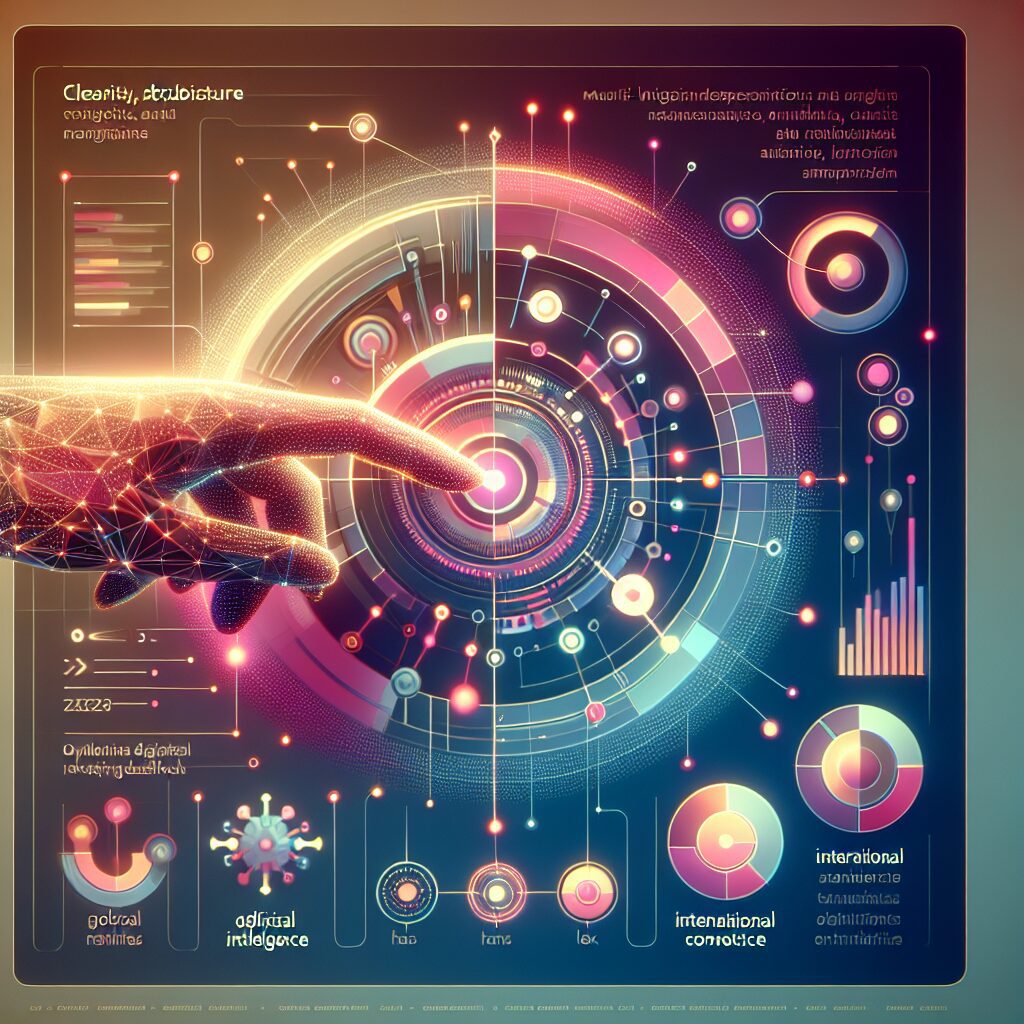About eldris
At Eldris, we automate SEO, multilingual site expansion, and EU compliance for brands scaling across Europe. Our AI-powered platform handles everything from content publishing to regulatory docs—so you don’t have to.
In This Article
- SEO Automation enables rapid scalability of multilingual and multinational search efforts.
- Tools powered by AI and machine learning provide predictive insights and content suggestions.
- Structured workflows reduce errors and enhance consistency across international sites.
- Compliance and technical accuracy are upheld through real-time automated audits.
- A smart automation strategy balances technology with human oversight to preserve quality.
- Poorly configured automation can be detrimental—always test and review before publishing.
- Future-focused teams integrate automation with data-driven strategic planning.
- Choose platforms that meet regional, linguistic, and industry-specific SEO needs.
- Automation boosts not only efficiency but also the global reach and ROI of digital assets.
- Explore related strategies in Read a related article to expand your international SEO capabilities.
Automation: The New Foundation of International SEO
How Automation Became Core to Global SEO Execution
SEO Automation has emerged as a critical pillar in the world of international optimisation. As global brands expand their digital presence, the need to manage multiple websites, languages, and regional search engines has increased exponentially. Manual SEO efforts are no longer sufficient for sustaining visibility and ranking across international markets. Automation provides the means to systematically scale these efforts without sacrificing precision or quality.
Over the past decade, the international SEO terrain has evolved significantly. Search engines have become more intelligent, algorithm updates more frequent, and user expectations more complex. With these changes, automation has risen to address the growing demands for speed, accuracy, and consistency. By deploying automated solutions for keyword research, content localisation, and tactical SEO adjustments, digital marketers can implement changes across markets faster than ever before.
From multinational enterprises coordinating operations across 50+ territories to startups experimenting with global outreach, automation enables seamless execution. Crucial tasks—such as generating hreflang tags, managing canonical URLs, or optimising meta data—can now be handled at scale with robust automation protocols. The reliance on static SEO spreadsheets and siloed tools is rapidly being replaced by dynamic, API-powered workflows.

Automated SEO Workflows: Scaling Efficiency Across Borders
Workflow Automation Advantages for Multilingual Sites
Multilingual websites face unique challenges when it comes to SEO performance. Each language variation must be correctly indexed, localised for cultural nuances, and aligned with regional search engine algorithms. SEO Automation simplifies this complexity through structured workflows that maintain uniform standards across every localisation.
One immediate benefit of workflow automation is the elimination of repetitive tasks. For instance, updating page titles or meta descriptions across hundreds of pages in multiple languages can be executed using a central automation script. This not only accelerates the process but also ensures consistent branding and messaging across regions.
Content translation, too, benefits immensely from automation. While human translators remain essential for nuanced messaging, automated systems can generate initial translations, perform multilingual keyword insertion, and even recommend layout modifications based on language structures. Additionally, modern tools now offer automatic alerts when translated pages fall out of sync with their source content.
Analytics integration is another arena where automation shines. Platforms can be programmed to extract SEO data per region, identify anomalies, and trigger alerts when SERP positions drop in specific markets. This minimises reaction time and enables strategic fixes before traffic is impacted.
“Automation empowers international SEO teams to focus on strategy while machines handle the scale.”
AI in SEO: Driving Smarter International Optimization
Artificial Intelligence (AI) is now the backbone of intelligent SEO Automation. Instead of simply executing tasks, today’s systems analyse vast datasets to recommend targeted strategies. AI models can identify keyword opportunities across languages and regional markets by evaluating user behaviour, search trends, and competitor positioning.
AI integrates seamlessly with content management systems, suggesting optimal keyword placement based on real-time SERP data. At a meta level, AI can even recommend structural changes to a website’s layout for better UX signals, which increasingly factor into search engine rankings.
Furthermore, AI aids in predictive SEO by modelling how algorithm updates might impact international pages. This allows proactive adaptation rather than reactive damage control. Voice search optimisation, visual search readiness, and semantic clustering—all made feasible through AI—are increasingly relevant in future-proofing SEO strategies.
Machine Learning and Predictive SEO at Scale
Machine Learning (ML) extends AI’s capabilities by learning from historical SEO data to refine future outcomes. For example, ML models can analyse past performance metrics to pinpoint which types of European content earn the most backlinks or which Asian markets favour video over text.
This predictive capability allows SEO professionals to pre-empt market shifts, launching smarter campaigns. ML can also recommend localised content themes based on observed user interaction patterns. Campaigns become more responsive and less reliant on trial and error.
When implemented correctly, ML algorithms can even determine optimal publishing times for different regions, test title variants for CTR uplift, and forecast traffic based on trend extrapolation. The deeper the dataset, the more accurate the predictions—giving international teams a formidable competitive edge.
Localized SEO Meets Global Automation: Best Practices
Successful international SEO hinges on effective localisation. SEO Automation excels at scaling localisation without compromising authenticity. However, this requires a well-orchestrated blend of automation and human oversight.
Begin by ensuring that all content management systems support multilingual metadata and structured data formats. Automated tagging and markup insertion tools can help maintain schema.org standards across regions. Implement dynamic XML sitemaps catered to individual languages and enhance discoverability through region-specific image tagging.
Next, invest in tools that integrate language detection and automatically assign hreflang annotations based on user location and browser settings. This strengthens geo-targeting and avoids keyword cannibalisation across markets.
Finally, build centralised dashboards that visualise performance data per language or region. Automation tools can coalesce data from Google Search Console international profiles, revealing insights that inform your global content roadmap.
Technical SEO Automation: Audits, Hreflang, and Beyond
Technical SEO forms the backbone of international visibility. For ranking parity, all global versions of a website must comply with structural correctness. SEO Automation simplifies this via scheduled site audits, real-time broken link detection, and algorithmic crawl budget optimisation.
Hreflang implementation is perhaps the most significant automation benefit here. Automating the mapping and deployment of hreflang tags ensures the correct content reaches the intended audience, mitigating duplication and improving indexing accuracy.
Other technical operations such as automated schema validation, redirect handling, 404 identification, and mobile performance scanning contribute to a robust infrastructure. Together, they maintain site health without constant manual intervention.
Choosing the Right Tools: Evaluating SEO Automation Platforms
Not all SEO Automation tools are created equal. Selection must align with your business objectives, website architecture, and regions of operation. Features to evaluate include multilingual capabilities, API integrations, audit scheduling, keyword intelligence, and custom reporting.
Popular enterprise platforms offer advanced features like cross-domain tracking, multilingual crawl simulations, and interlinking automation. Always check whether the tool supports languages with different character sets or RTL (Right-to-Left) script compatibility.
Trial periods can be valuable. Use them to benchmark automation accuracy and overall efficiency. Industry forums and case studies are also useful for gauging long-term reliability. A poorly configured tool can do more harm than good, so prioritise flexibility and user control.
For examples of effective tools and their global applications, refer to Learn more about SEO Automation for International Growth.
Overcoming Challenges with Multilingual Automation
While SEO Automation offers immense advantages, it is not without its hurdles. Improper automation can result in incorrect hreflang use, broken language files, or imperfect keyword localisation. These errors can ultimately cause ranking volatility or loss of trust.
To mitigate risk, always combine automation with governance protocols. Implement human-in-the-loop review stages for critical changes. Configure safeguards like alert thresholds before implementing site-wide modifications across markets.
Another common pitfall is over-reliance on machine translation. Although translation APIs can increase scalability, they often lack cultural finesse. Consider them a starting point, not a final solution. Pair them with native linguist reviews wherever possible.
Building a Scalable SEO Automation Strategy in 2025
Heading into 2025, a sustainable strategy starts not with tools but with structured planning. Identify your global SEO objectives and map them against automation opportunities. Are you aiming to reduce manual workload, improve multilingual consistency, or scale link acquisition?
Lay a foundation by standardising SEO processes for all international teams. Define naming conventions, reporting structures, and data governance. Next, select platforms that offer workflow automation tailored to your specific industry—for instance, ecommerce vs SaaS may require different approaches.
Don’t ignore training. Equip your global SEOs with analytical and tool-based competencies. Automation is not a replacement for strategy but a vehicle through which better strategic outputs can be delivered.
The Role of SEO Automation in Cross-Border Compliance
Cross-border SEO operations must adhere to country-specific data privacy laws and digital content regulations. Automation tools now support compliance frameworks by automatically updating privacy notices, cookie banners, and consent protocols based on user geography.
Additionally, accessibility standards and legal labelling vary internationally. Automation can flag metadata that violates policy or suggest remediation steps. Regular compliance audits, executed via automated routines, protect against penalties that can damage brand integrity.
To learn more about international compliance for SEOs, see Unlocking SEO efficiency with automation.
Future-Proofing International SEO Through Intelligent Automation
As search technologies evolve, SEO Automation will be essential in adapting to new paradigms such as generative search, zero-click results, and augmented reality interfaces. Intelligent systems backed by AI and machine learning will decipher intent from minimal query input and serve the most relevant multilingual content.
Future-proofing requires an investment mindset. Continuously evaluate automation systems for adaptability, and be prepared to pivot strategies when platform capabilities shift. Close collaboration between SEO, IT, and content teams ensures automation is utilised to its fullest potential.
Integrating SEO automation into your broader digital ecosystem also enhances ROI tracking. Unified data flows help measure the success of automation against KPIs like bounce rates, rankings, and lead conversions.
Conclusion: A Smarter Future for International SEO
SEO Automation is not simply a trend—it is the evolution of global search strategy. From AI-driven content optimisation to automated technical audits, the technologies now available offer smarter, faster, and more scalable solutions for international websites.
However, success lies not just in implementation, but in responsible use. Combining automation with strategic planning and human intelligence ensures that global websites stay competitive in an increasingly dynamic search environment. Invest wisely, automate strategically, and the world becomes more than just a marketplace—it becomes your audience.
Great guide on how-automation-is-changing-the-landscape-of-international-seo – Community Feedback
How does automation improve international SEO?
Automation streamlines repetitive SEO tasks, ensures consistent optimization across multiple languages and regions, and speeds up implementation, enabling faster global scalability.
What are the key benefits of automated SEO tools for global websites?
Automated tools quickly identify optimization gaps, maintain high SEO standards as sites grow, and provide actionable insights for international audiences.
Is automated SEO better than manual SEO for international campaigns?
Automated SEO enhances efficiency and scalability, but strategic oversight is still needed to ensure localized relevance and compliance.
What tasks in international SEO can be automated?
Tasks like keyword research, technical audits, hreflang implementation, reporting, and competitor analysis can all be streamlined through automation.








